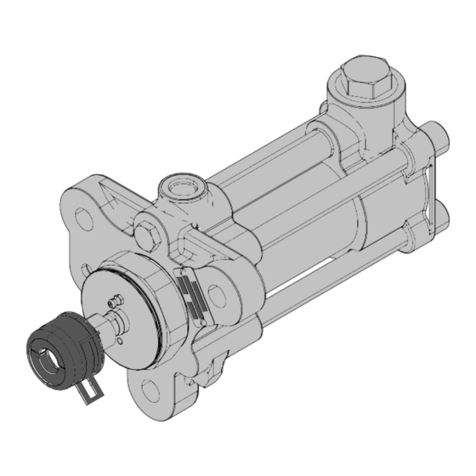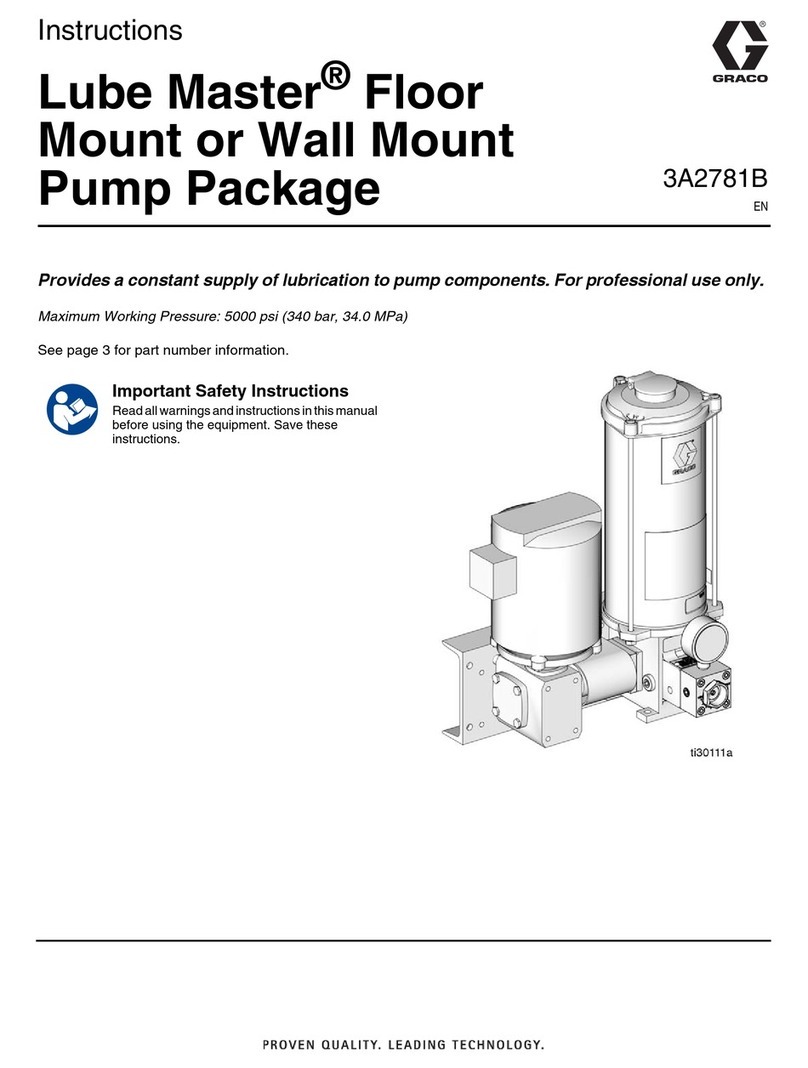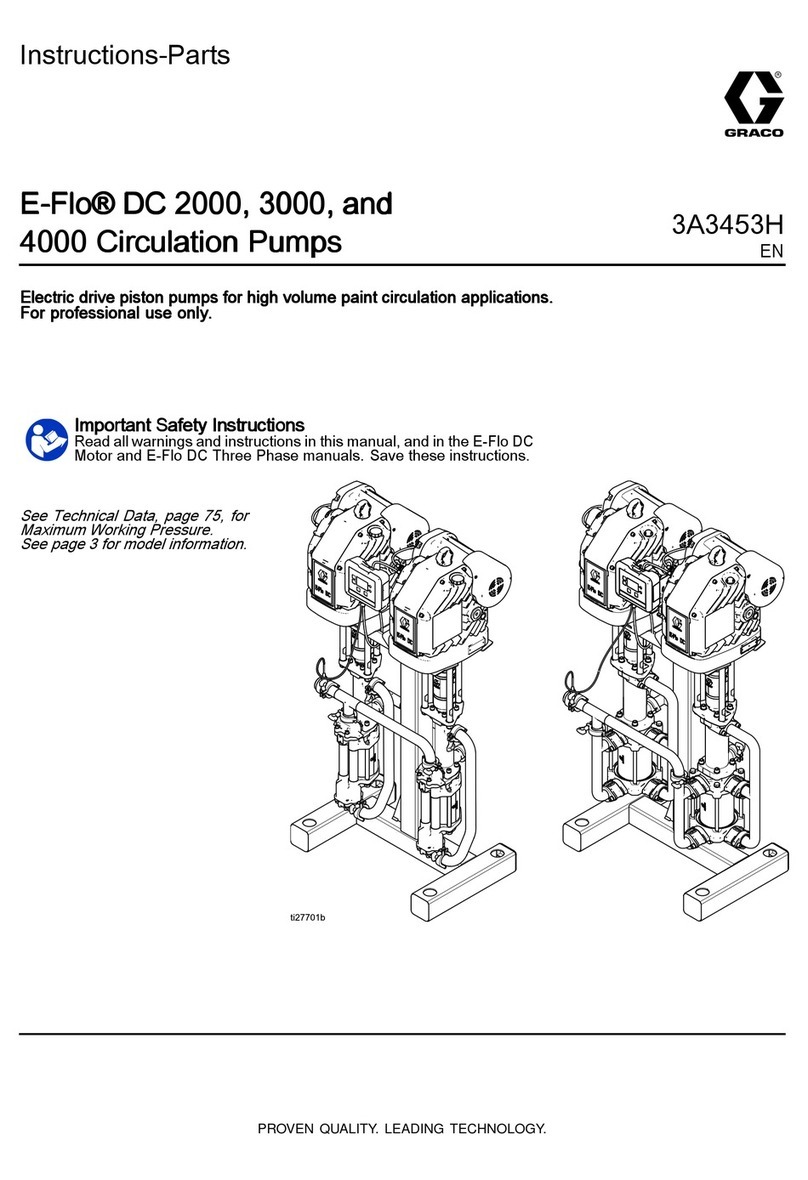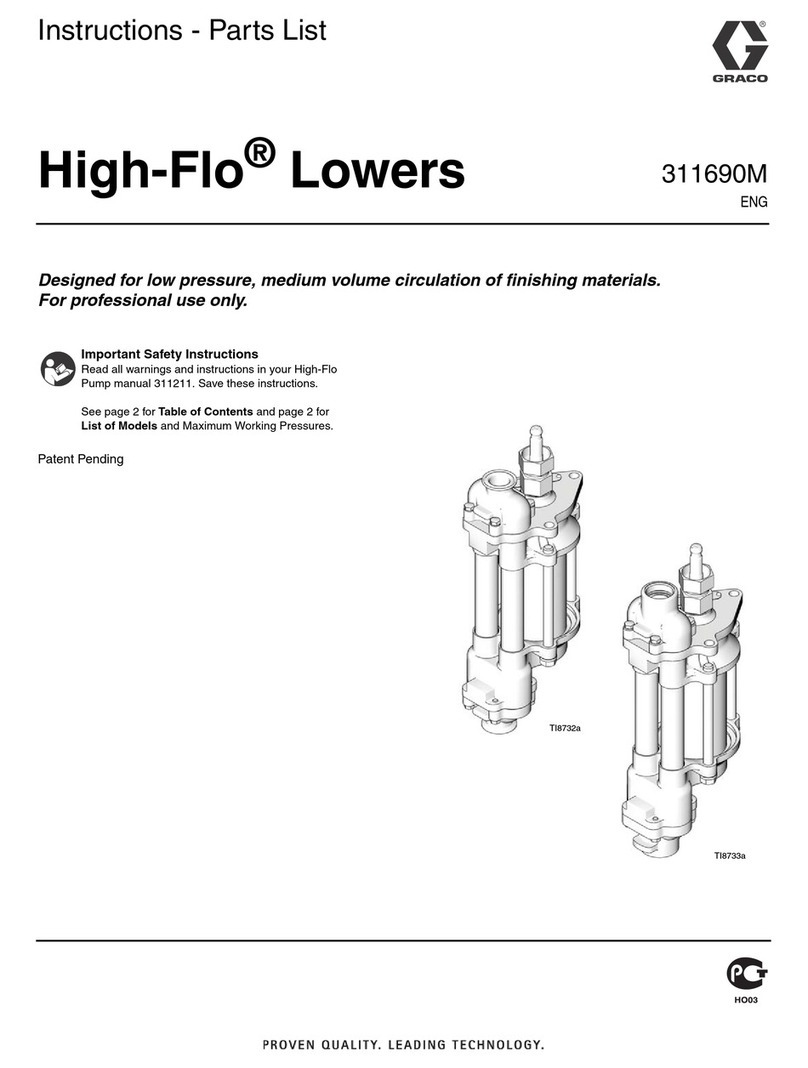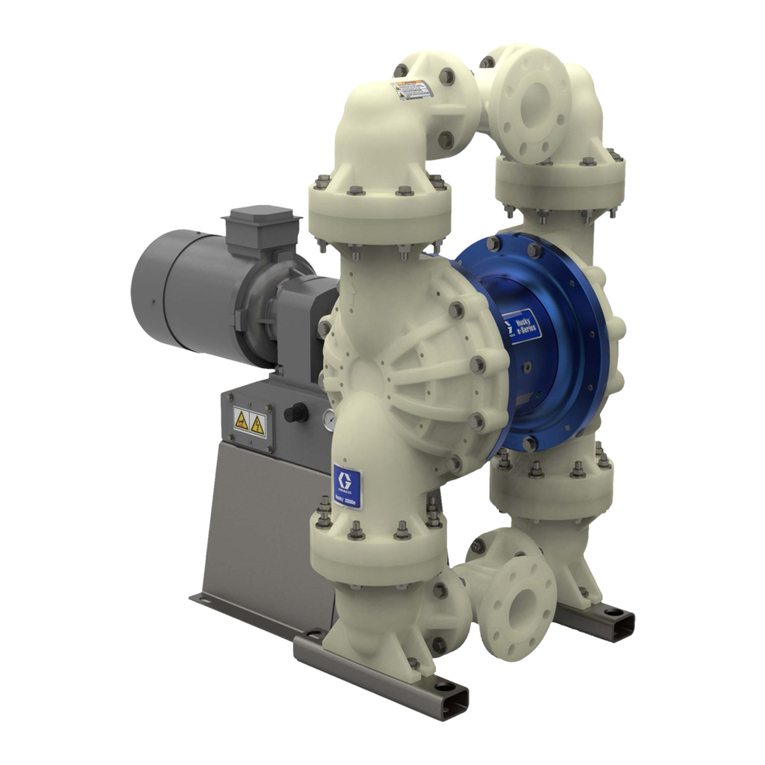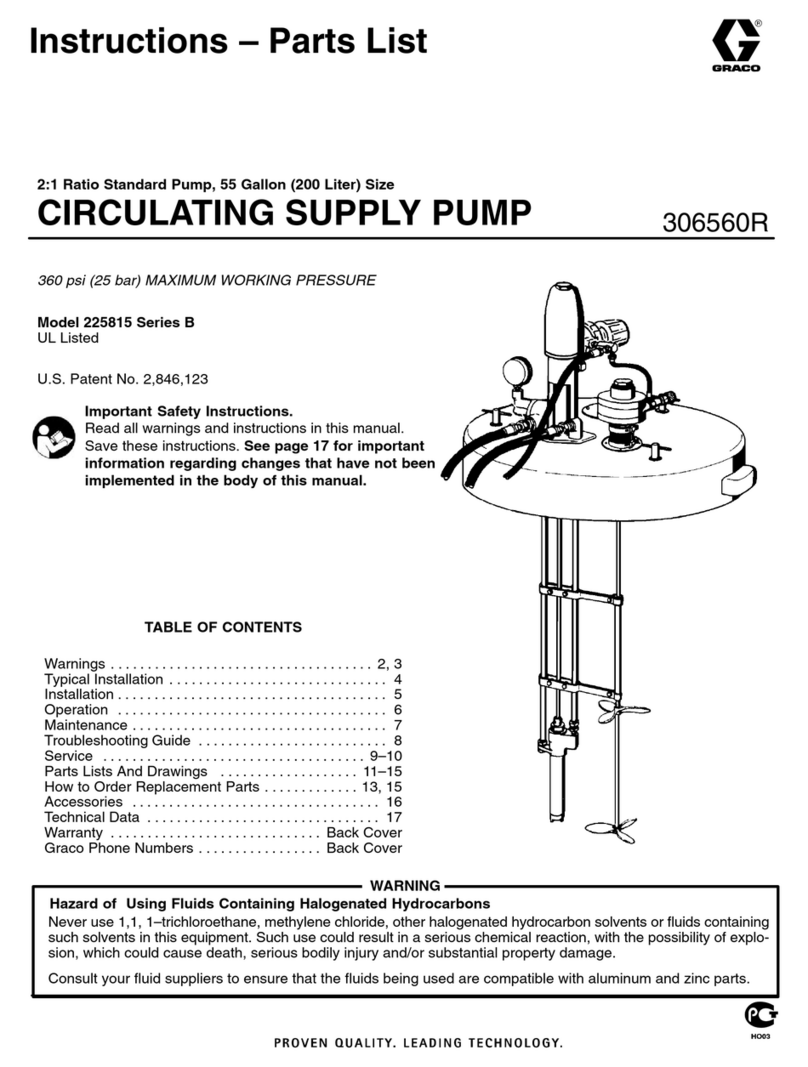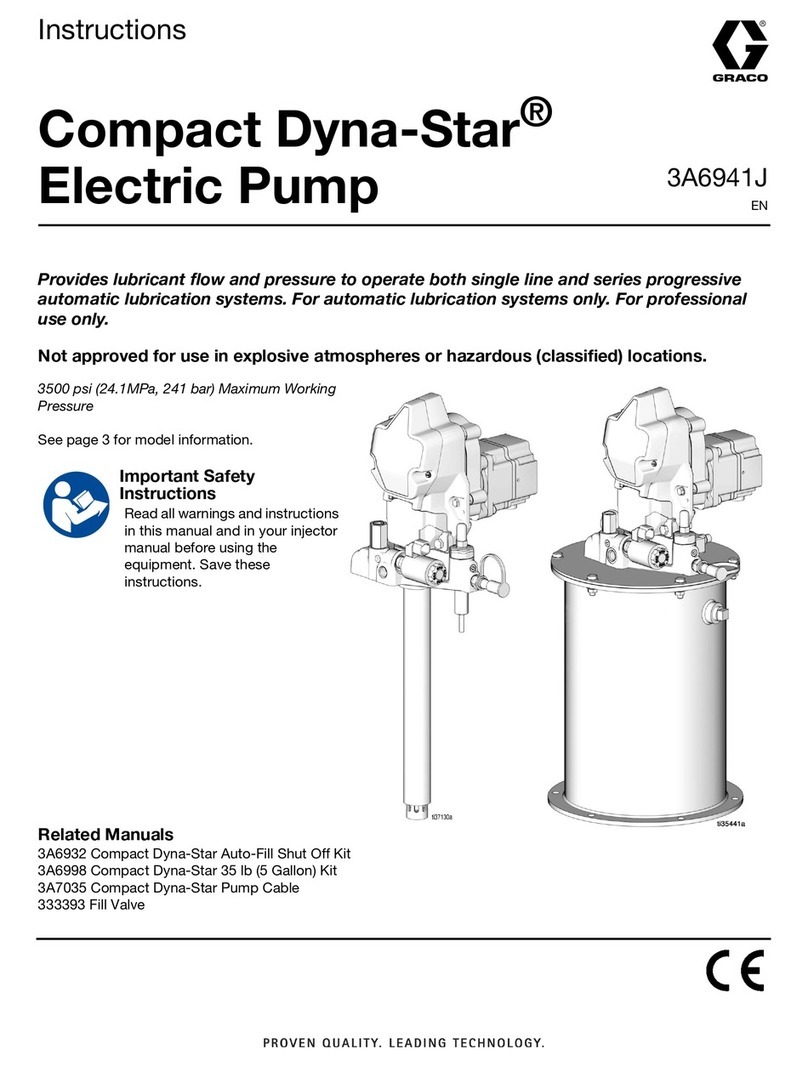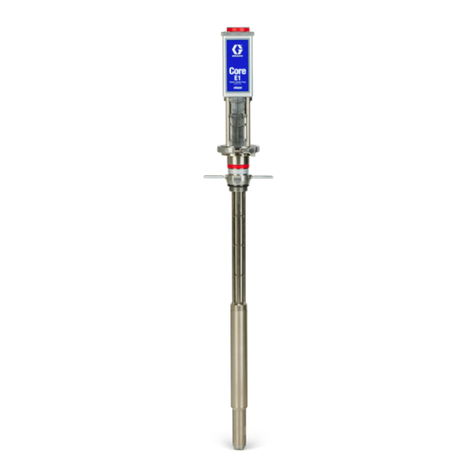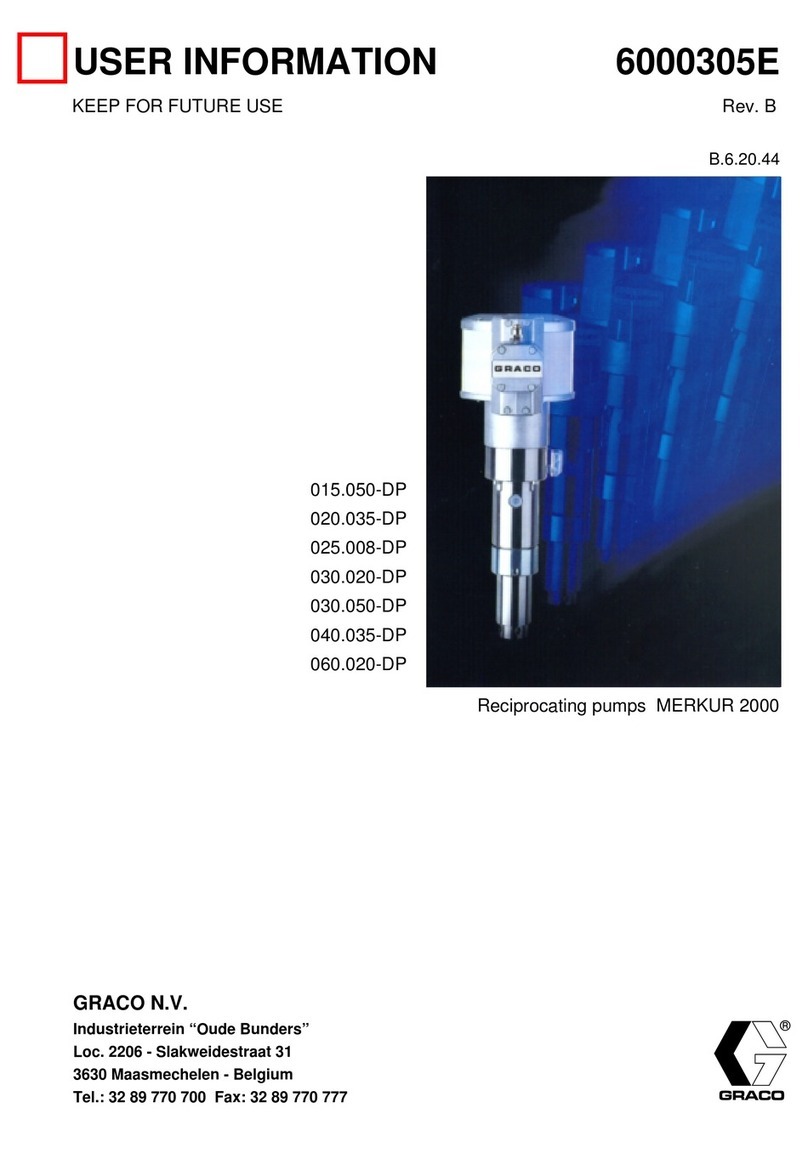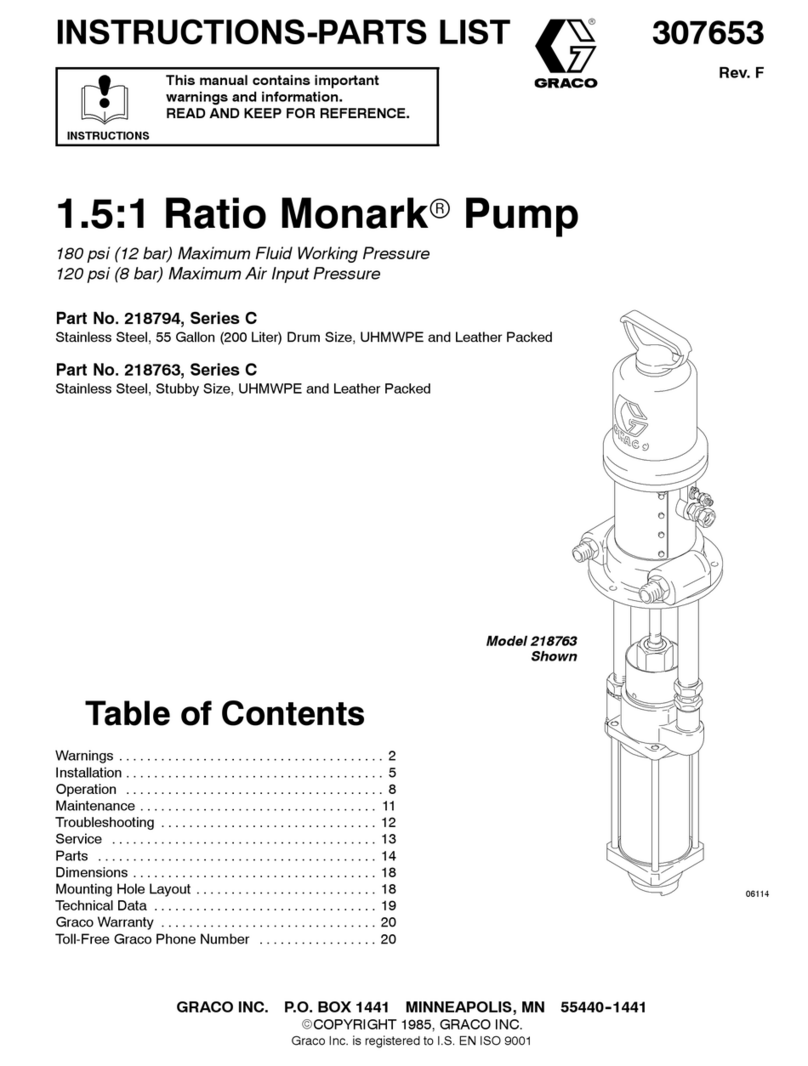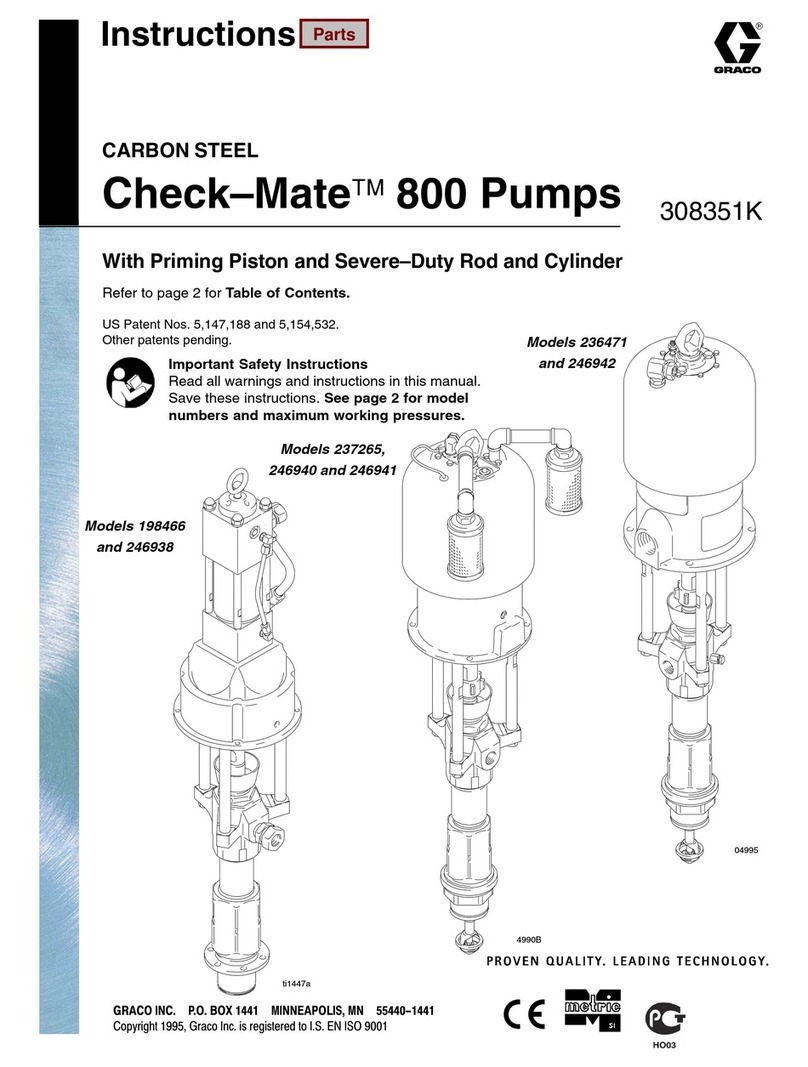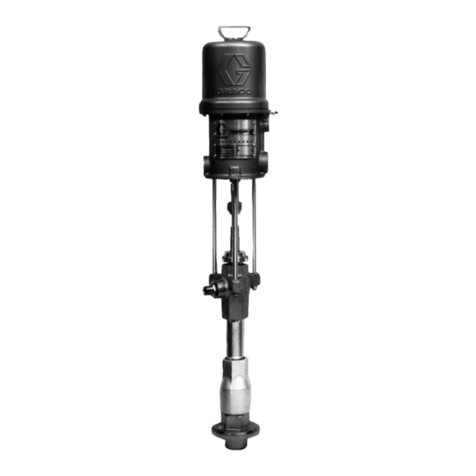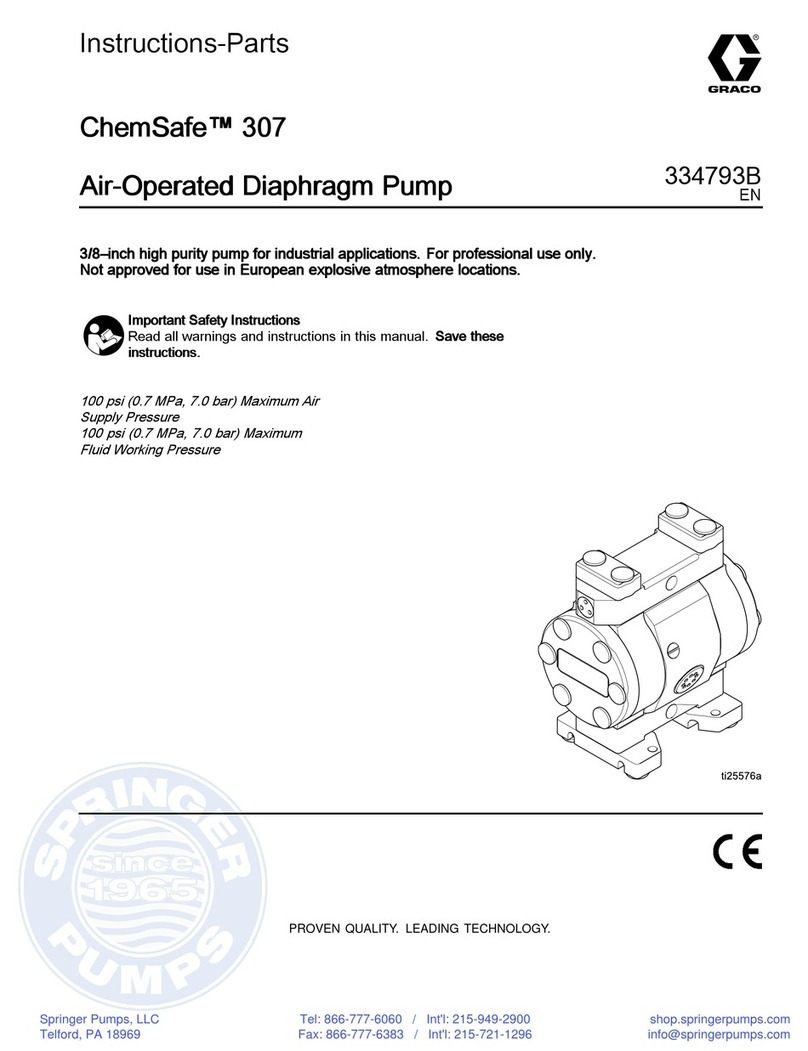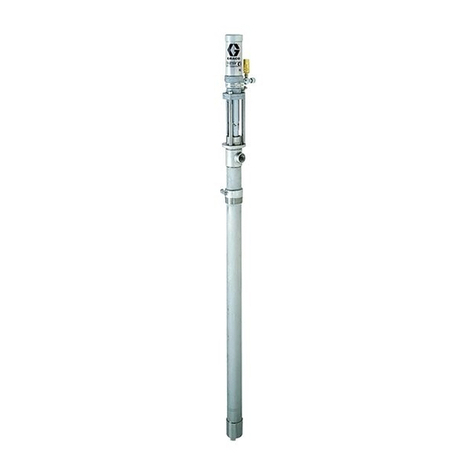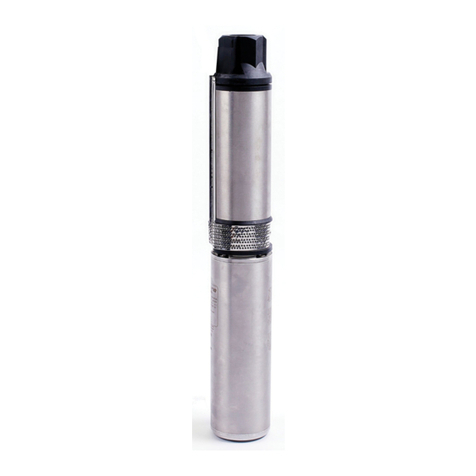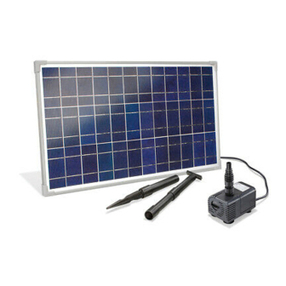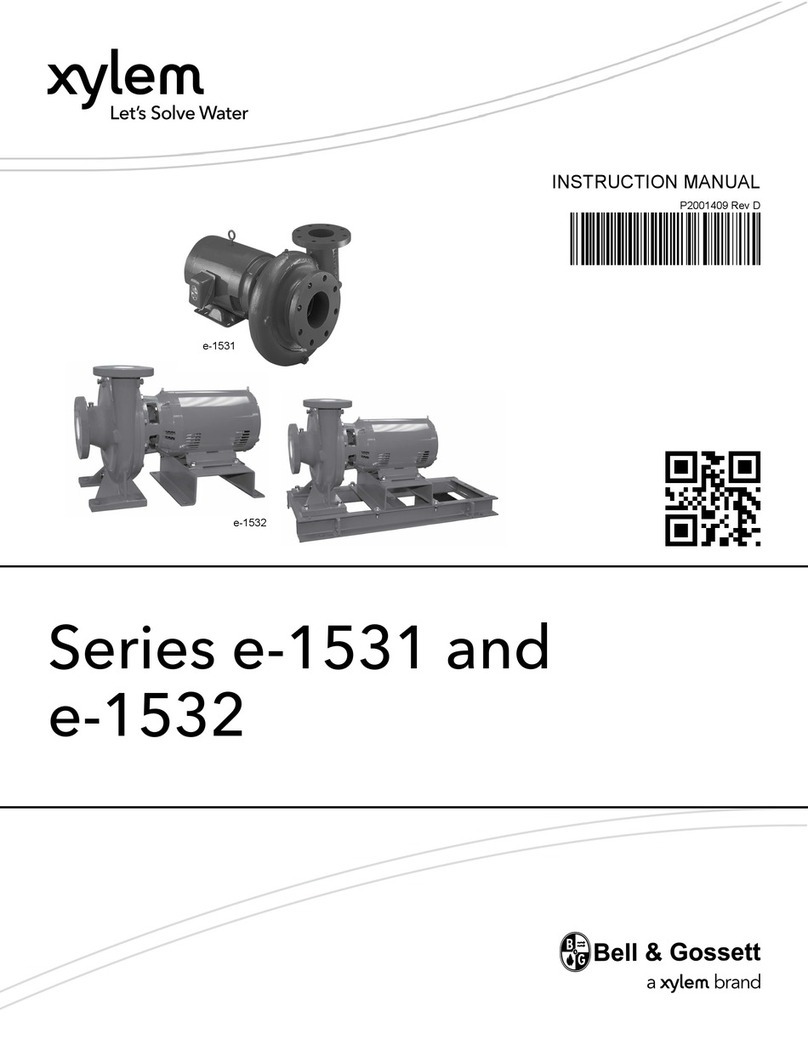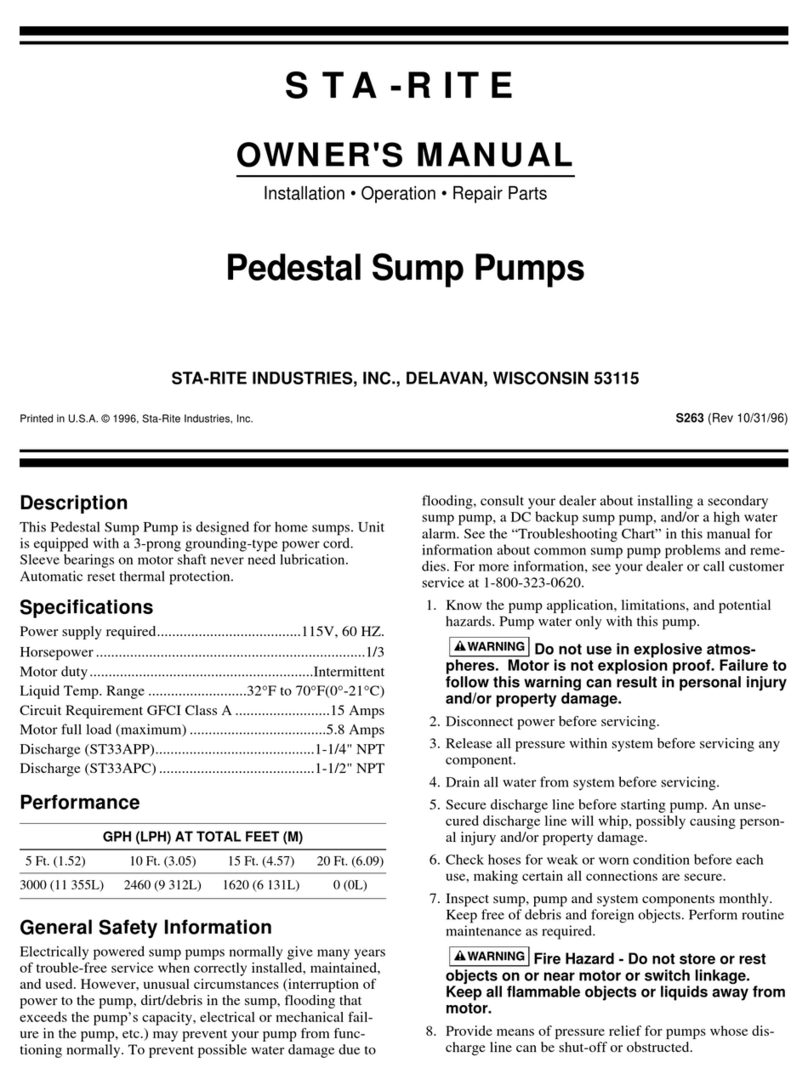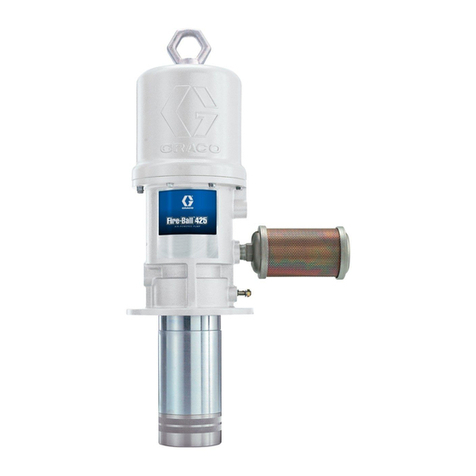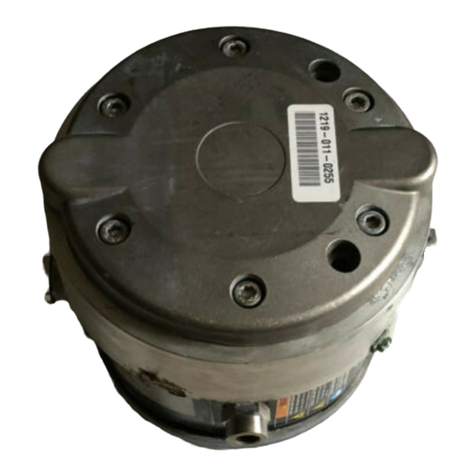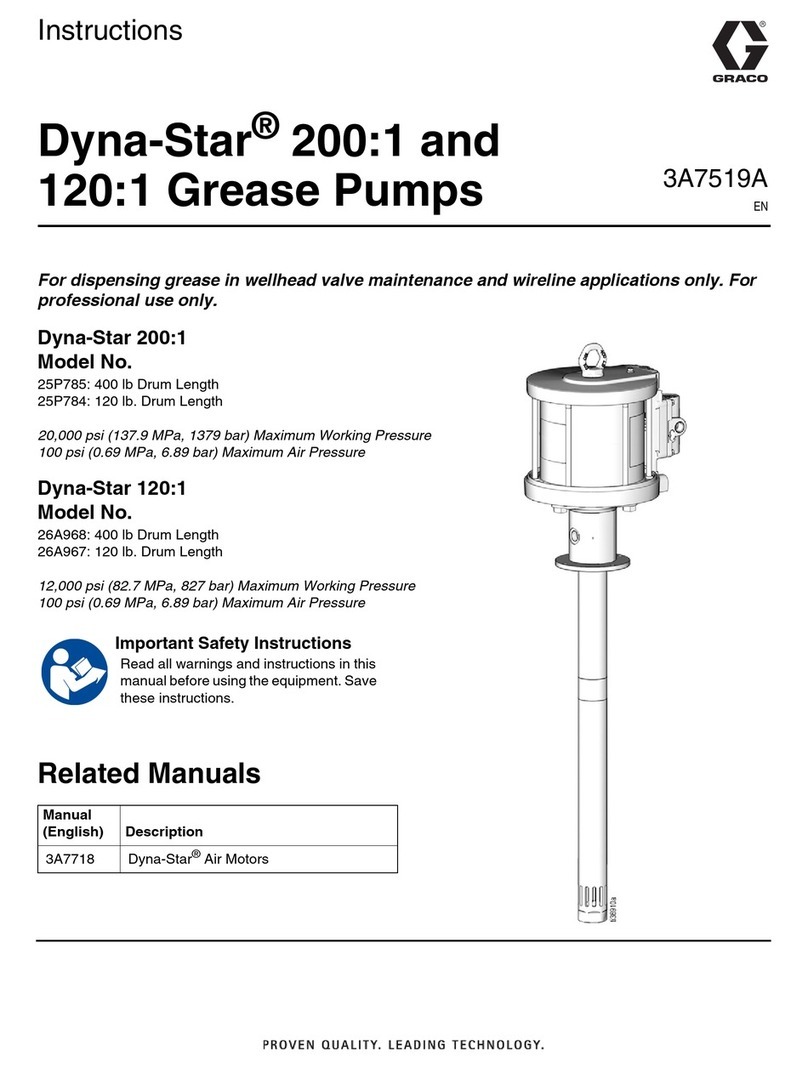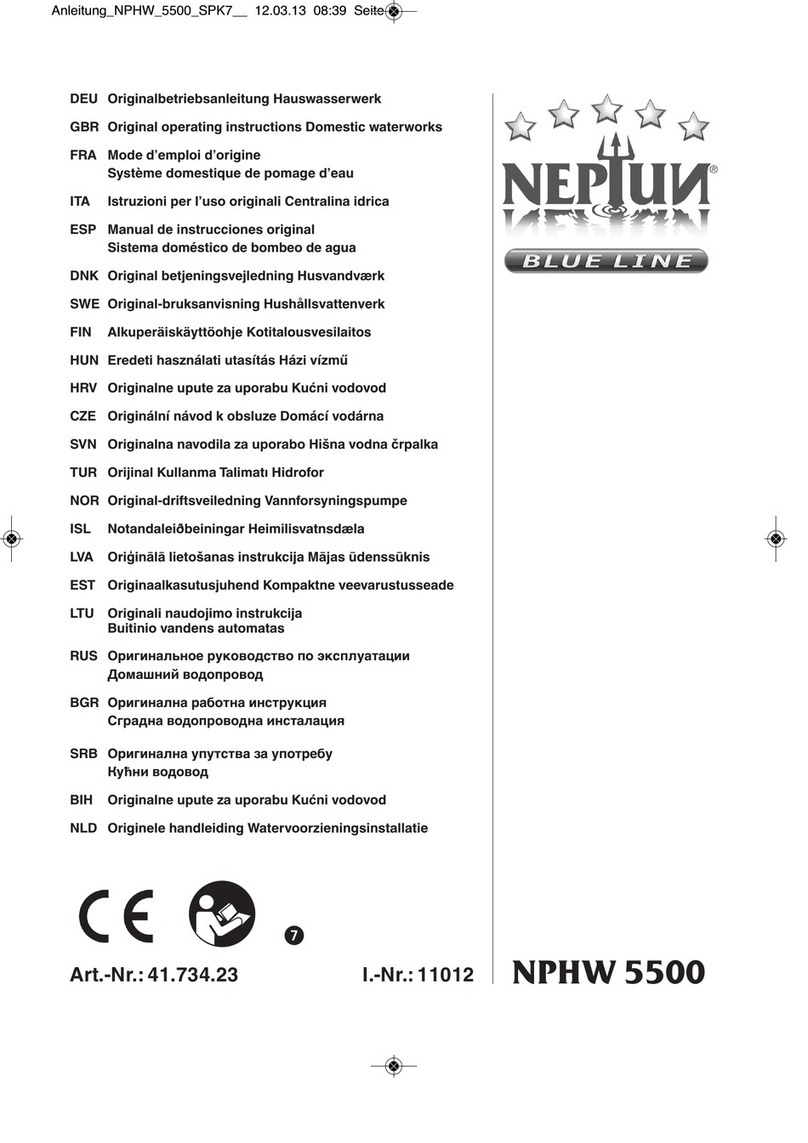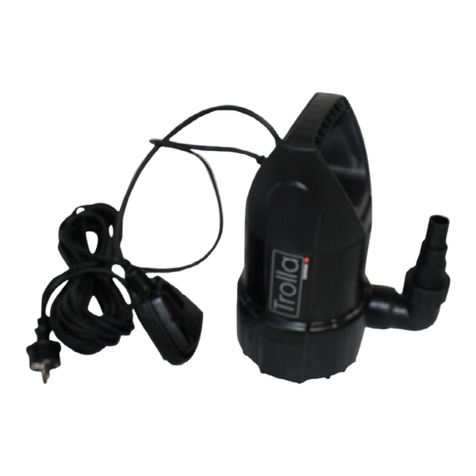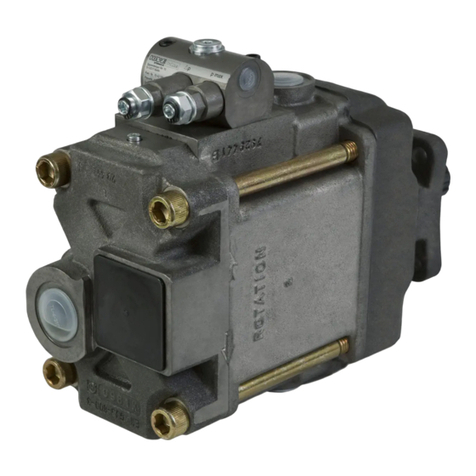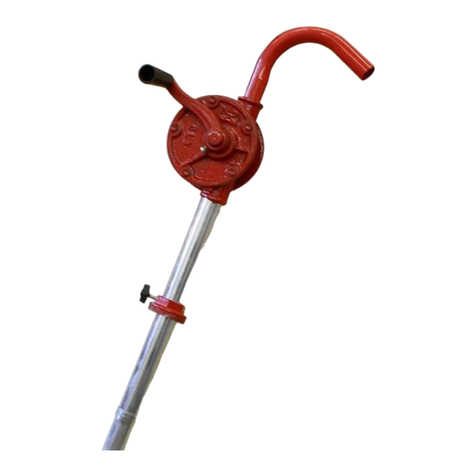
5307001
Installation
General
Note: Reference numbers and letters in parentheses
in the text refer to the callouts in the figures and parts
drawings.
DThese pumps are designed to be part of a Hydra-
CatRsprayer that will proportion, mix, and spray
polyurethane chemicals. Refer to your separate
Hydra-CatRinstructions. If you are using this
pump to mix antifreeze and water, refer to page 9
for special plumbing instructions.
DMount the pump to suit the type of installation
planned. The pump dimensions and mounting hole
layout are shown on page 11.
DThe pump is supplied with a 3/4 npt(m) intake
nipple. If your installation requires a 3/4 npt(f) or 1”
npt(m) intake, remove and discard the 3/4 npt(m)
nipple, and connect your plumbing directly to the
intake housing. Refer to manual 307430 for a parts
breakdown of the displacement pump.
WARNING
Two accessories are required in your system: a
bleed-type master air valve and a fluid drain valve.
These accessories help reduce the risk of serious
injury, including splashing in the eyes or on the
skin, and injury from moving parts if you are adjust-
ing or repairing the pump.
The bleed-type master air valve relieves air trapped
between this valve and the pump after the air is
shut off. Trapped air can cause the pump to cycle
unexpectedly. Locate the valve close to the pump.
The fluid drain valve assists in relieving fluid pres-
sure in the displacement pump, hose, and gun;
triggering the gun to relieve pressure may not be
sufficient.
Grounding
To reduce the risk of static sparking, ground the spray-
er and all other spray equipment used or located in the
spray area. Check your local electrical code for de-
tailed grounding instructions for your area and type of
equipment. Ground all of this spray equipment:
DPump: use a ground wire and clamp to connect the
sprayer to a true earth ground. See Fig. 1.
DFeed pumps: use a ground wire and clamp to
connect the pump to a true earth ground. See your
separate feed pump instruction manual.
DAir compressors: refer to manufacturer’s recom-
mendations.
DAir and Fluid Hoses: use only grounded hoses and
check resistance regularly.
DHeaters: wire into a properly grounded power
supply. If using a generator, be sure it is positively
connected to a true earth ground.
DSpray gun: obtain grounding through connection to
a properly grounded fluid hose and sprayer.
DFluid supply containers: according to local code.
DObject being sprayed: according to local code.
DAll solvent pails used when flushing, according to
local code. Use only metal pails, which are conduc-
tive, placed on a grounded surface. Do not place
the pail on a non-conductive surface, such as paper
or cardboard, which interrupts grounding continuity.
DTo maintain grounding continuity when flushing or
relieving pressure, always hold a metal part of the
gun firmly to the side of a grounded metal pail, then
trigger the gun.
To ground the pump, loosen the grounding lug locknut
(W) and washer (X). Insert one end of a 12 ga (1.5
mm2) minimum ground wire (Y) into the slot in the lug
(Z) and tighten the locknut securely. See Fig. 1. Con-
nect the other end of the wire to a true earth ground.
Order Part No. 222011, grounding wire and clamp.
Fig. 1 0720
Y
W
X
Z

